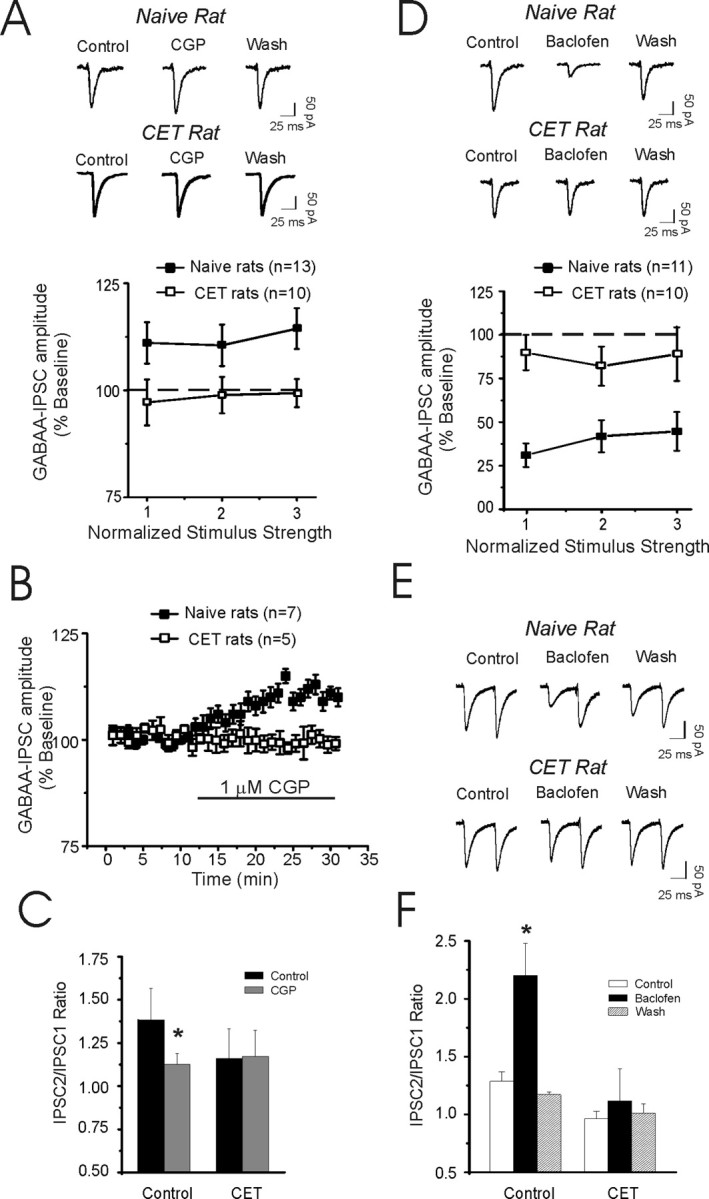Figure 4.

Effects of CGP and baclofen on IPSC amplitude in CeA. A, I–O curve from CeA neurons of naive and ethanol-dependent rats. CGP 55845A (1 μm) in the presence of APV and CNQX significantly (p < 0.05; n = 13) increased mean IPSC sizes (averaged over all stimulus intensities) in naive animals. B, Time course of mean IPSCs evoked by half maximal stimulus intensity recorded from CeA neurons from naive (n = 7) and ethanol-dependent (n = 5) rats. C, CGP 55845A also significantly (*p < 0.05) decreased the mean PPF of IPSCs, but only in CeA from naive rats. D, The GABAB receptor agonist baclofen (10 μm) is less effective in CeA neurons taken from CET rats compared with naive rats. Superfusion of baclofen for 10 min markedly (p < 0.001) decreased the GABA-IPSC amplitudes in neurons from naive rats. In neurons from CET rats, the effects of baclofen were significantly (p < 0.05) reduced, suggesting a decrease in GABAB receptor sensitivity after CET. E, Representative traces of a paired-pulse study (at 50 ms interstimulus intervals) of IPSCs in CeA neuron from naive (top) and CET (right) rats (bottom). F, Pooled data of mean PPF ratios in neurons of naive and CET rats. Baclofen significantly (*p < 0.05) increased PPF ratio of IPSCs in naive (n = 7) rats, but not in CET (n = 6) rats. Error bars indicate SEM.
